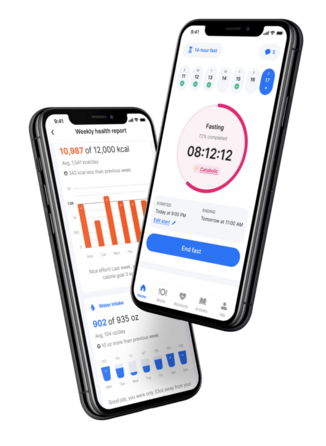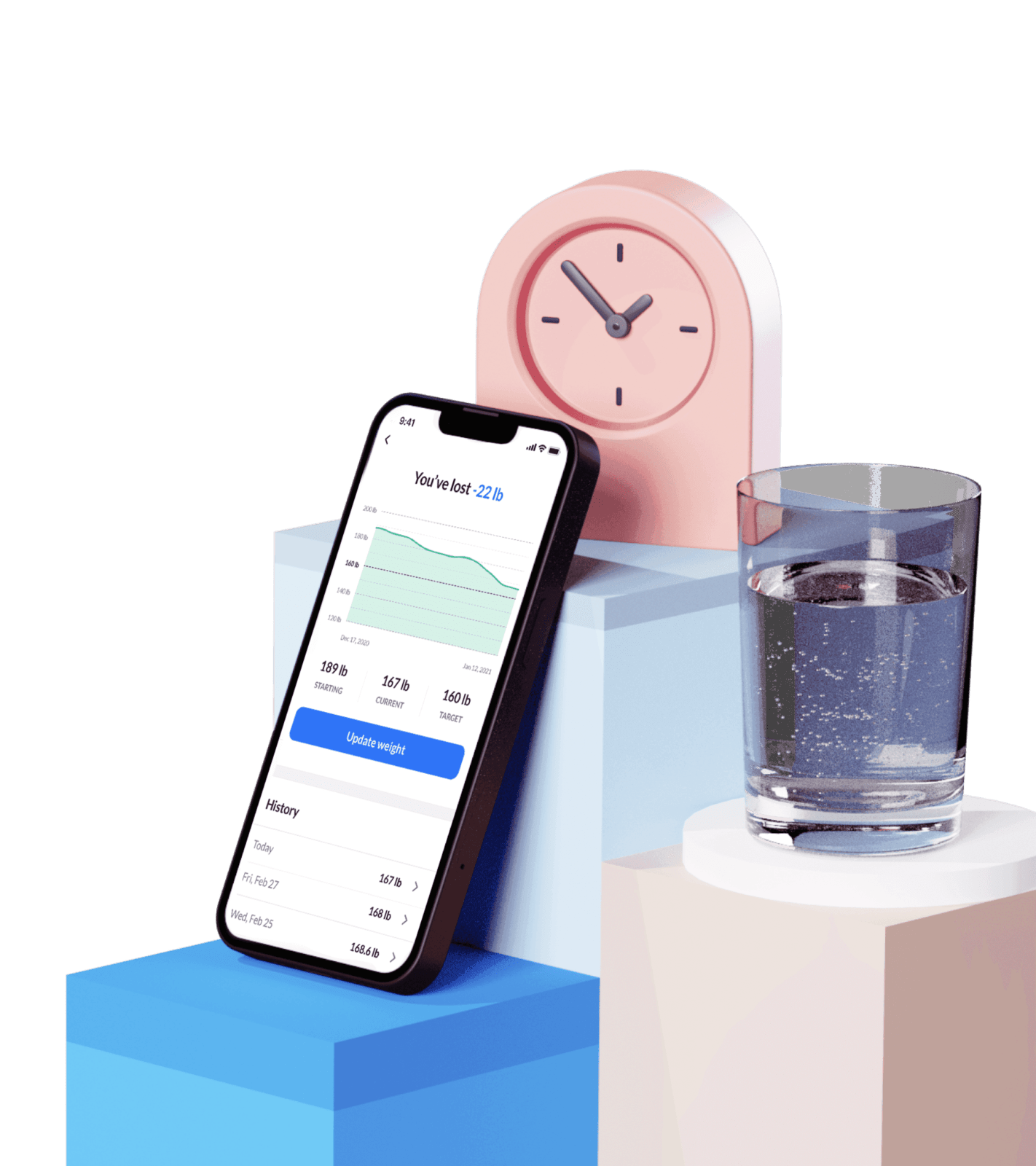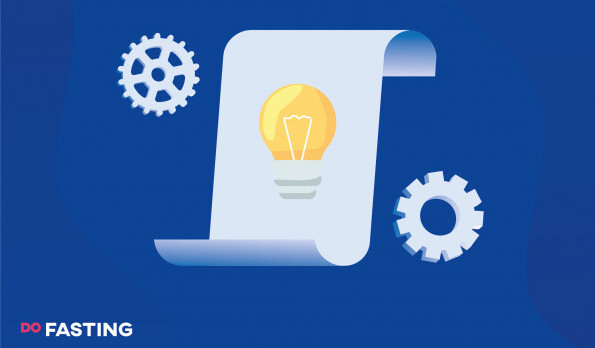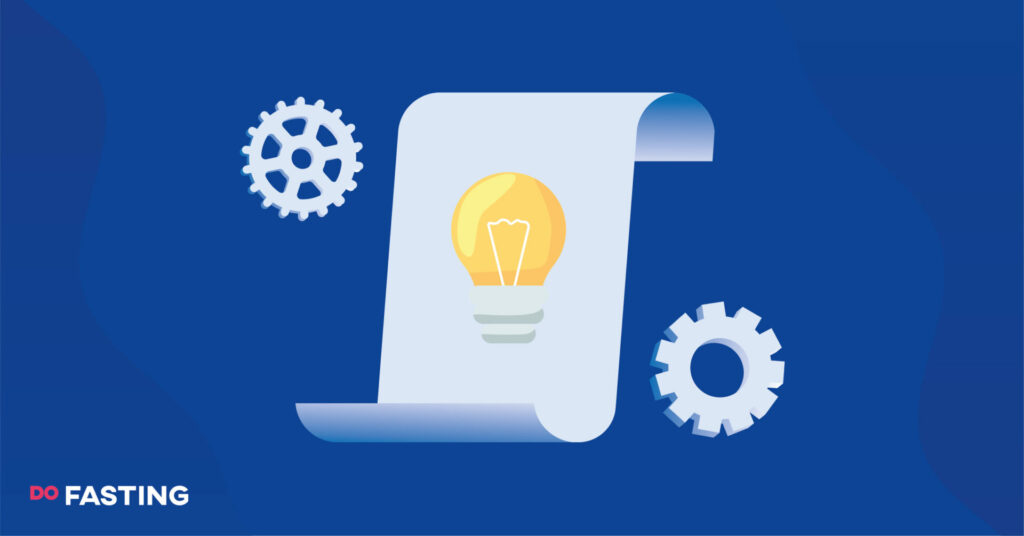Contents
Different Stages of Fasting Explained
Intermittent fasting refers to periods of eating and periods of fasting. You focus more on when you eat rather than what food you consume. Avoiding food for a set time is supposed to trigger the fat-burning process and cause weight loss results.
If you’re just starting intermittent fasting, DoFasting is here to guide your journey. The DoFasting app gives you all the tools to lose stubborn weight and improve your overall health.
Fasting beginners will also have access to 5,000+ in-app recipes that include low-calorie desserts. You don’t have to worry about planning your meals every day. All you need to do is scroll through DoFasting’s list to find something delicious.
So, when you start fasting, your body goes through different stages to burn fat. It all depends on how long you fast and how your metabolism works during the fat-burning mode. For a simple overview of the stages, you can find a list below:
- Fed state
- Early fasting state
- Fasting state
- Long fasting state
- The refeed
Take a
1-minute quiz
and discover how much weight you can lose with DoFasting!

1. Fed State (1–2 hours): Stable blood sugar
The fed state happens a few hours after you’ve eaten. Your body is digesting the food and absorbing important nutrients. During this specific stage, blood sugar levels will increase as your insulin levels are adjusting to digestion of carbs and glucose.
For most people, the fed state lasts 3-4 hours after eating. You will only leave this state once the body has fully digested all the food. Other hormones, like leptin and ghrelin, slowly decrease to stop you from feeling hungry again after meals.
Some of the symptoms/signs during this phase include:
- Lower hunger levels
- Increased energy
- Bloated stomach
You can also have a look at some benefits and tips:
Benefits
- Balanced blood sugar
- Higher energy levels
- Fewer hunger pangs
- More nutrients in the body
Tips
- You should focus on eating healthy foods that promote weight loss.
- Make sure to drink water before and after meals to aid the digestive system.
- Consume foods containing protein, dietary fiber, and unsaturated fat.
- Document your calorie intake to ensure you’re not eating too much.
2. Early fasting state (3–4 hours): Ketosis
Once your body has digested the food after 3-4 hours, you’ll enter the early fasting state. This particular stage can last 18 hours after your last meal. During the early fasting process, blood sugar and insulin levels drop to normal.
The body then starts turning stored glucose into energy. Near the end of the second stage, most glycogen stores will be gone, meaning your body has to find another fuel source. Lipolysis starts to happen because you urgently need more energy.
Lipolysis is a process that occurs when triglycerides in fat cells break down into molecules to fuel your body. This is the first big step when transitioning into the next stage. However, it will take at least 18 hours for glycogen to be depleted completely.
Below, you’ll find the symptoms/signs during early fasting:
- Slight hunger pangs
- Decreased energy
- Reduced water weight
- Stomach cramps
- Lack of endurance
Keep reading to find some helpful benefits and tips:
Benefits
- Reduced inflammation
- Lower insulin levels
- Fewer fat stores in the body
- Less insulin resistance
- The loss of fatty acids
Tips
- Drink more water during this stage to maintain optimum hydration.
- Keep yourself distracted to avoid snacking while early fasting.
- Go for walks to speed up the glucose-burning process.
- Avoiding consuming calories to maintain your weight loss results.
3. Fasting state (18–48 hours): Autophagy
Stage three is when the magic really begins.
A process called autophagy occurs when your body starts to replace abnormal cells that aren’t functioning properly. Autophagy is very important for your health, as it improves your brain, lowers acute inflammation, and reduces the risk of heart disease.
During this time, you’ll also be entering ketosis – a metabolic state that uses fat as the primary fuel source. All of the glycogen stores are now gone, so your body has no choice but to burn stubborn fat and produce ketone bodies to keep you functioning.
The fasting state can last anywhere between 18 to 48 hours. The longer you fast, the more likely you’ll stay in ketosis for longer. It’s important to note that intermittent fasting for too long is not safe, so keep that in mind before trying to gain the health benefits.
Saying that, we’ll now look at the signs and symptoms:
- Headaches
- Short-term fatigue
- Muscle cramps
- Reduced appetite
- Increased ketone bodies
- Bad breath
- Sleep changes
Here are the benefits of fasting and some tips:
Benefits
- Better cognitive performance
- Noticeable weight loss
- Reduced blood pressure
- More lean muscle mass
- Decreased stored fat
- Prevents chronic diseases
Tips
- Drink more water while fasting to prevent dehydration.
- Have more rest time to avoid making fatigue worse.
- Give yourself distractions so you don’t think about eating food.
- Keep track of the fasting period to ensure you’re not doing too much.
- Consume calorie-free supplements that boost your energy levels.
Take a
1-minute quiz
and discover how much weight you can lose with DoFasting!

4. Long fasting state: Immune function
The long fasting state means you’re not consuming calories for 2 or more days. While this does sound challenging, it’s possible for people who take serious precautions. Another name is “starvation state” when it comes to restricting food intake for 48 hours.
Just keep in mind that beginners should try easier fasting methods before diving into extended fasting head first. For example, the 12-hour fast could offer similar health benefits, except it doesn’t encourage you to exceed prolonged fasting.
Keep reading to learn more about the different fasting lengths:
48–54 hours
Once you hit the 2-day mark, your insulin levels will decrease even more. During this process, beta-hydroxybutyrate (BHB) steadily creeps up. BHB is a type of ketone that encourages the body to reserve muscle tissue and remove stubborn visceral fat.
This smaller phase lasts anywhere between 48 to 54 hours. People usually stop after 2 days to avoid causing long-term health complications. However, with the right amount of water and sleep, you can safely continue this fast to see more weight loss results.
Here are the common signs and symptoms:
- Painful hunger pangs
- Increased fatigue
- Sleep problems
- Regular headaches
- Lower insulin levels
- Dry mouth and throat
54–72 hours
Going up to 3 days should be enough to lose weight. Your metabolism and hormone levels are settled, while the body breaks down fat continuously. The metabolic state called ketosis will continue to happen if you don’t consume any dense calories.
The kidneys also generate more sugar, leading to gluconeogenesis. This is a process that provides the main source of energy for your brain. Most ketone bodies contribute to gluconeogenesis by maintaining vital organ and cognitive function.
Lastly, branched-chain amino acids (BCAAs) are broken down to help preserve muscle tissue in your body. Even though you’re losing fat, it’s important to take care of your muscles too. BCAAs are there to keep you strong throughout an extended fast.
Please keep in mind that medical supervision is advised for long fasts. Changing your eating patterns suddenly might cause some health issues. Instead, consult with a doctor beforehand and gain professional advice about starting an intermittent fast.
Now, here are the signs and symptoms:
- Slow movements
- Increased anxiety
- Weak muscles
- Lack of focus
- Stomach pains
Below, you’ll find the benefits and tips:
Benefits
- Better weight loss results
- Stronger immune cells
- Increased insulin sensitivity
- Higher growth hormone levels
- More responsive immune system
- Reduced blood lipids
Tips
- Seek medical advice before extending your fasting window.
- Listen to what your body is saying throughout the fast.
- Try to get at least 8 hours of sleep every night.
- Get enough electrolytes while completing the extended fast.
- Stay busy to avoid focusing on any uncomfortable symptoms.
5. The refeed: Recovery
The refeed state is basically your time to recover from the fast. You can break your fast with soft foods like bone broth, eggs, soup, and smoothies. Getting enough nutrition is very important for fueling the body again and giving it the energy to stay awake.
Always eat nutrient-dense foods that won’t be too heavy on your stomach. Fasting for too long can make your gut extra sensitive during digestion. Instead, consume light food that aim to restore nutrition, while kick-starting the processes in your body again.
Here are some signs or symptoms you might be in this stage:
- Greater energy levels
- Better concentration
- Regular bowel movements
- Less hunger pangs
- Improved moods
- Longer sleeping schedules
You can also look at some benefits and helpful tips:
Benefits
- Stronger muscle function
- No more old immune cells in your body
- You’ll be increasingly insulin sensitive
- The body stores more healthy nutrients
Tips
- Extend your eating window to allow for more recovery time.
- Make sure to consume normal food again for a few days.
- Eat smaller portions of food and gradually increase the serving size.
- Drink more water to maintain hydration levels.
- Avoid eating processed foods that will ruin your weight loss.
Take a
1-minute quiz
and discover how much weight you can lose with DoFasting!

Stages of Fasting: Key Takeaways
Now you know the important stages of intermittent fasting. You can understand what your body goes through and the process of losing weight. Just remember to follow the tips, as you want to stay as healthy as possible when navigating an extended fast.
See how DoFasting will improve your life
Find out what works for you with this 60-sec quiz approved by our experts and get your personal revolutionary fasting assistant.
Start the Quiz
This is an evidence-based article that includes scientific citations. DoFasting’s professional writers and editors prepared the content, which a team of medical experts verified to be accurate.















